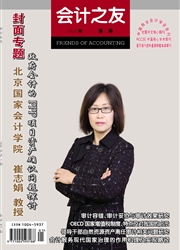

 中文摘要:
中文摘要:
本文从持股比例5%以上的大股东通过二级市场集合竞价系统减持股份的角度,揭示了“高送转”背后的大股东利益实现机制。研究发现,上市公司“高送转”的股利分配政策能够引起市场的积极反应,从而为大股东在二级市场减持股份创造了有利条件;与普通送转相比,大股东更倾向于在“高送转”后进行减持,减持股份的比例与送转股比例正相关,并且总体上的减持价格高于该股票的市场平均价格,验证了大股东借助“高送转”逢高减持套现的机会主义行为。进一步研究发现,公司实施“高送转”后的经营业绩显著下降,尤其是伴有大股东减持的“高送转”,其送转股后的经营业绩和市场表现更差,验证了大股东控制下的“高送转”可能成为一种利益输拱的工具,侵害中小投资者的利益。
 英文摘要:
英文摘要:
This study reveals the interest mechanism behind the "high send and transfer" dividend policy from the aspect of major shareholders holding more than 5 percent of equity stakes reducing shares through the call auction system. The empirical results show that there are positive reactions to the stock dividend about the conversion of retained earnings to common shares, which provide opportunities for large shareholders selling shares in the secondary market. Compared with the "ordinary send and transfer" dividend policy, major shareholders are more inclined to reduce their stakes after implementing the "high send and transfer" policy. We also find that the reduction ratio is significantly and positively correlated with the degree of "send and transfer". Overall, the selling prices of large shareholders are apparently higher than the average prices. These results testify the existence of opportunism behaviors of major shareholders benefiting from the "high send and transfer" policy. Further study indicates that the listed companies' operating performances significantly decrease after implementing the "high send and transfer" dividend policy and there are no positive cumulative abnormal returns, especially for the group reducing equity stakes. In conclusion, the study demonstrates that the "high send and transfer" policy has become tools by which major shareholders can expropriate minority shareholders' interests.
 同期刊论文项目
同期刊论文项目
 同项目期刊论文
同项目期刊论文
 期刊信息
期刊信息
